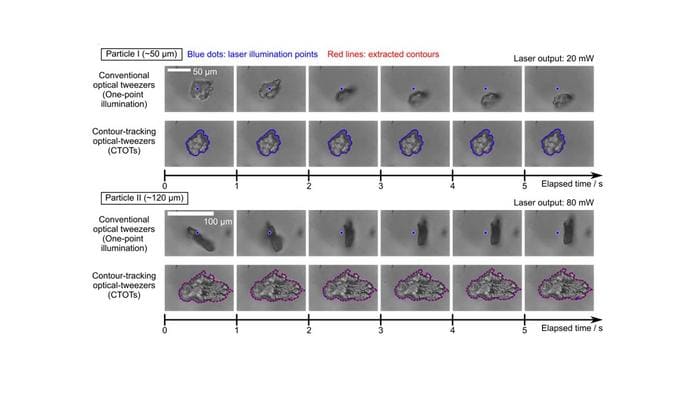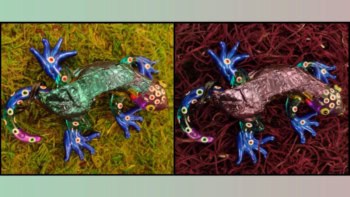
Optical tweezers – already a mainstay of biological research for their ability to hold and move nano-sized objects – can now trap larger items such as cell clusters, bacteria, plankton and microplastics thanks to a new technique developed at the University of Tokyo in Japan. Known as contour-tracking optical tweezers (CTOTs), the new method produces stable traps for irregularly shaped particles bigger than 0.1 mm – something that was challenging to do using conventional optical tweezers. According to team leader Satoru Takahashi, the technique could expand the technology’s applications to include environmental research as well as biology.
“This new capability enables the observation and analysis of these different types of samples with precise manipulation, contributing to a deeper understanding of their behaviours in various settings, crucial for advances in biology and environmental science,” Takahashi says.
Powerful tools for biological research but limited
Optical tweezers were invented by the American physicist Arthur Ashkin, who received a share of the 2018 Nobel Prize for Physics for his work. These devices use a highly focused laser beam to generate forces that hold and move micron-or nano-sized objects near the beam’s focus, and they have become powerful tools for biological research.
Standard optical tweezers come up short, however, for particles bigger than 10 μm. This is because the optical forces available cannot create a big enough gradient to trap and manipulate such large objects in three dimensions. Another weakness is that tweezers work best for symmetrical shapes like spheres and rods. In this case, the reason is that the forces light exerts on irregularly shaped objects are unbalanced due to complex interactions between the light and the particle, Takahashi explains. This imbalance tends to make the object rotate uncontrollably or move out of the laser focus spot altogether.
Determining the contour of the target particle
In CTOT, the incident light hits the edge of the particle. Even if the particle has, overall, an irregular shape, its shape in the illuminated region can be locally approximated as a curved surface. “Our system determines the contour of the target particle from microscope images and then scans the laser focal point along this contour in real time, balancing the optical forces around its irregular shape,” Takahashi tells Physics World. “It also automatically adjusts the size of the scanning light patterns to fit the target’s size, allowing it to be applied to particles bigger than 0.1 mm.”
The researchers tested their technique on irregularly shaped polystyrene microparticles, which they collected by polishing a polystyrene spoon with a rasp. CTOTs do not require any prior information about the particles’ shape. They do not have to be illuminated by laser light from two sides either, as is the case for conventional methods for larger particles, making the method easier to implement.

Individual polyatomic molecules are trapped in optical-tweezer arrays
The new optical tweezers could be used with living organisms such as plankton and cultured biological cells as well as environmental samples, adds Ryohel Omine, who did the bulk of the work on the study. For example, Omine suggests that analysing the behaviour of microplastics could inform more effective measures to mitigate pollution, thereby improving human health and aiding environmental conservation.
The CTOTs technique is detailed in Optics Letters.



